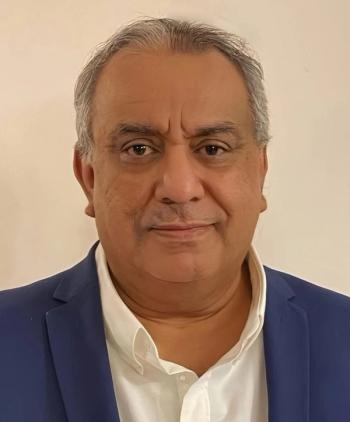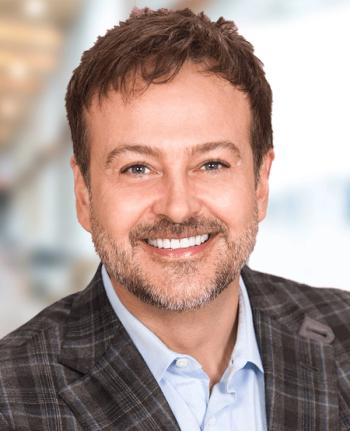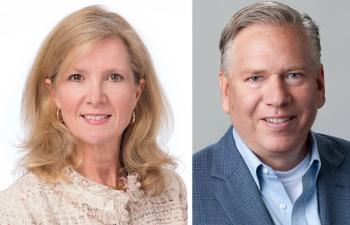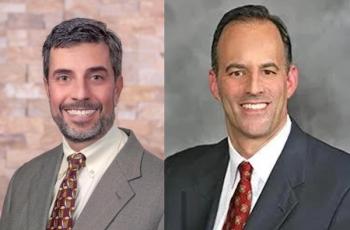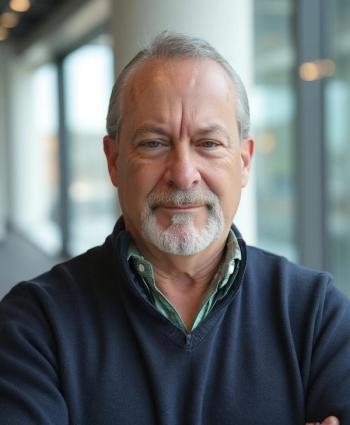
10 money mistakes physicians must avoid
Important lessons from physicians and financial advisers who work for them.
It’s a familiar refrain: Doctors often don’t manage their money well. They chase returns and end up with extremely risky investments, or they forego saving altogether to focus only on student loan repayment. Often, they trust the wrong adviser. Learning from the most common mistakes, however, can lay a foundation for improvement.
Here are some important lessons when it comes to investments from physicians and financial advisers who work for them.
1 Avoid taking on too much debt
As financial markets and the economy hit a nadir in 2009, Melissa Lucarelli, MD, was also ending a five-year partnership with a physician she had hired out of residency to join her Randolph, Wisconsin-based primary care practice.
She took on thousands of dollars in debt to pay him a signing bonus and moving allowance, expand her office and supplement his salary while he built his patient base. Then he quit at the five-year mark, when his state loan forgiveness program ended. He also took about half of the patient base he had generated, says Lucarelli, a member of the Medical Economics Editorial Advisory Board. He started a practice just outside the non-compete radius.
“It took more than four years to pay off all those incentives,” she says. Paying off the debt from hiring the junior partner kept her from fully funding her retirement and children’s college savings accounts, she says, but she carries no ill feelings today. She understands he was frustrated as well by the slow pace of debt repayment, which kept him from becoming a full partner as quickly as he wanted.
Lucarelli regrouped, personally and professionally. She hired a nurse practitioner and a physician assistant instead of another partner. She found a new 401(k) plan provider that charged a fraction of her former plan’s fees, so that her savings could build faster once she began contributing again.
She opened a 529 college savings plans for her children instead of continuing to fund some older custodial accounts because the newer plans count as parental assets in college financial aid formulas. Older plans, such as plans through the Uniform Gift to Minors Act, are considered student assets, making them less favorable in aid formulas.
“It didn’t kill us; we got past it,” she says of those dark days. “But if I could do it over differently, I would have figured out a way to have a health system assist with the recruitment costs.”
A health system she was affiliated with offered assistance early on, but she declined because she felt there were too many restrictions attached. In hindsight, Lucarelli wishes she would have found a way to make the deal work.
2 Don’t over-rely on financial advisers
During residency, internist Robert Allison, MD, FACP, asked a financial adviser to fulfill what he thought was a pretty straightforward request to open a Roth IRA (which shelters after-tax contributions from future income or capital gains taxes). But he learned later that the adviser had mistakenly opened a traditional IRA (which offers a current tax deduction and defers future income taxes).
The error was easy to fix, but it reinforced for the Pierre, South Dakota-based physician the importance of not delegating too much authority to advisers.
William Bernstein, MD, Ph.D., a principal with Efficient Frontier Advisors LLC in Portland, Oregon, agrees. Physicians need to educate themselves about how investing and financial planning work, whether they are investing for themselves or hiring someone to do it for them, he says. They don’t need to spend as many years studying finance as they did training for medical careers, but some real effort is required, he says.
That involves not only vetting a financial adviser’s credentials to avoid fraud, but determining what services are actually needed and how best to pay for them. So-called robo-advisers (such as Vanguard, Betterment and Wealthfront), which offer varying degrees of automated portfolio management, can handle rebalancing and account maintenance for very small fees.
Traditional, face-to-face financial planning is changing, too. Many advisers still charge a percentage of customer assets for their services or an hourly rate, but some offer a flat-fee retainer. A frank discussion about services rendered by advisers is critical, experts say, because often there is a disconnect between advisers and their clients over what services are actually needed.
3 Pay attention to financial statements
Another common mistake physicians make is not monitoring account statements after they’ve begun a relationship with a financial adviser, says Harold Evensky, CFP, chairman of Evensky & Katz, an advisory firm in Coral Gables, Florida, with a large physician clientele.
“They glance at them and put them away and it’s not until sometime later they discover things are going on they didn’t sign on for,” such as frequent stock trading or getting into riskier investments without authorization, he says.
Being specific about what type of trading authorization is being granted and then monitoring progress is a must. “It might not rise to the level of outright fraud, but it [can be] inappropriate. Bottom line, physicians need to pay attention on an ongoing basis to what’s happening with their money,” he says.
Monthly statements should list individual trades during the period, and an overall snapshot of current holdings, with the mix held between stocks and bonds, advisers say. Checking that balance can alert investors to a need to rebalance the risk in their portfolios if the adviser hasn’t already flagged it.
4 Stay away from complicated products
In an effort to avoid taxes or protect assets in case of lawsuits, many doctors tie up their wealth for long periods of time in investments that are difficult to liquidate quickly. But such investments are often expensive and not in doctors’ best interests, says Marguerita M. Cheng, CFP, chief executive of Gaithersburg, Maryland-based Blue Ocean Global Wealth.
“I see a lot of physicians in general being pulled into illiquid investments without understanding the totality of their situations,” Cheng says. She cites cash-value life insurance, which offers an investment component in addition to a death benefit, and is frequently pitched as a tax-advantaged savings tool.
But term insurance, which is generally cheaper, should be used first to make sure a family’s needs are covered in the event of premature death. Only then should they consider additional products with an investment component, she says.
“Younger physicians clearly don’t have to cover all their life insurance need with cash-value,” she says.
5 Know your risks
Like other professionals with limited time to devote to managing money, some physicians are so keenly focused on investment returns that they don’t understand the importance of risk management or consider how they will generate income from their portfolios in retirement, says Mark Kemp, CFP, president and founder of Kemp Harvest Financial Group in Harleysville, Pennsylvania.
“They’re looking for that all-or-nothing investment style that’s going to make them rich,” he says. “Or they’ll say, ‘I’m not greedy, just get me 12% a year,’ thinking back to the 1990s when that was a conservative yield,” he says.
Rather than focus exclusively on returns, he tries to get these clients to redirect their energies to strategies for pulling income from their portfolios safely in retirement. Among them: using withdrawal strategies that minimize taxes and respond to market volatility in retirement.
6 Widen the focus beyond debt
It’s hard to blame physicians for feeling uneasy about the mountain of debt many of them face by the time they graduate from medical school. But paying off loans to the exclusion of saving for other goals is often a big mistake, says Melissa Sotudeh, CFP, an adviser with Halpern Financial in Rockville, Maryland. Many physicians are already getting a late start on saving for retirement if they begin in residency, so delaying even longer means missing out on the enormous benefit of compounding that occurs over time, she says. Advisers today typically recommend saving 15% of income for retirement for clients who started to save early, and 20% for late starters.
She recommends putting some money toward buying a house if that is a goal,
saving for retirement and saving for children’s college costs immediately after residency to get the benefits of compounding for as long as possible, along with paying down debt. Take those steps before buying new cars and taking expensive vacations, she says.
7 Don’t rely on forgiveness
Some physicians working in public health and nonprofit organizations thought they would qualify for public service loan forgiveness after making student loan payments for 10 years as part of a federal program that began in 2007. Now, the program’s future is uncertain as Congress debates trimming or killing it altogether.
Borrowers who were planning on forgiveness need to set aside extra savings they can access quickly if the loan repayments are going to continue, says Niv Persaud, CFP, CDFA, managing director at Transition Planning & Guidance LLC in Atlanta. This could be done via a taxable savings account, but contributions to Roth IRAs could also be used in a pinch, experts say, because contributions to those accounts can be withdrawn penalty-free before retirement age.
8 Steer clear of buying too much house
Lenders routinely offer attractive home-loan packages to doctors as they try to win other business from their medical practices, Persaud says. But just because a lender offers to underwrite a very large mortgage doesn’t mean the physician should consider buying the biggest house they can afford. The numbers bankers use for these offers often don’t consider a borrower’s complete financial picture, such as future obligations, so don’t get carried away here, she says. Some advisers have advocated buying large homes as an asset protection strategy in states with homestead exemptions for malpractice awards, but today retirement accounts are generally viewed as a better haven, experts say.
A rule of thumb for home buying suggests spending about two years’ income on a house (including the mortgage.) That amount won’t come close to buying a home in cities where prices have increased substantially in recent years, however. Homeowners in those pricey markets often view their homes as part of their investment portfolio, though financial advisers often caution clients to remember that home values can also decline.
Spending up to the maximum borrowing amount set by a lender-which can stretch to 31% of a borrower’s income for principal, interest, taxes and insurance-would be a major strain for physicians trying to make up for lost time on retirement savings, experts say. Strike a balance that will put a nice roof overhead without sacrificing the future.
Financial advisers typically recommend that professionals who get a late start on retirement saving put 20% of their income in retirement accounts, and set aside another 5% for medium-range goals. From the remainder, calculate a monthly house payment that leaves room for other living expenses.
9 Identify insurance needs early
Large health systems, and some independent group practices, offer disability, life and long-term care insurance, but the coverages are generally insufficient to cover the true cost of these significant negative events, says Hank Mulvihill, CFP, principal with Mulvihill Asset Management LLC in Dallas.
To get a better picture of life and disability insurance needs, experts say, physicians should track living expenses and multiply that annualized figure by a generous estimate of the number of years they or loved ones would need to cover. For long-term care, check out estimates by state at bit.ly/LTC-calculator.
10 Understand tax implications
In the name of tax avoidance, physicians often make investments that ultimately leave them worse off financially than if they had paid the tax, experts say. Annuities are a common example, says Eric Dostal, JD, CFP, a financial adviser with Sontag Advisory in New York.
Sales people often pitch annuities as tax-deferred savings, he says, but investors don’t realize the extent of the taxes they’ll owe on distributions. There are ways to get out of them, Dostal says, but be sure to understand surrender charges and other fees associated with liquidating annuities.
In addition to these common mistakes, physicians should keep in mind some basic rules when it comes to money, Bernstein says. Understanding that there is someone (typically a well-financed institutional money manager) on the other side of every trade an investor makes can be humbling but is also instructive for maintaining perspective when a certain course of action seems obvious, he says.
Likewise, understanding the history and psychology of markets is key, experts say. Though Bernstein doesn’t advocate market timing, he does think investors-whether they have an adviser or not-should be aware of market cycles and exercise caution about buying stocks when they are overpriced.
The ability of an investor’s portfolio to weather market downturns may be a lot lower than the investor’s emotional risk tolerance, and vice versa, he says.
“During my medical career I found that the worst physicians were the ones who never questioned themselves and the best ones were often consumed by self-doubt,” he says. “The same is true in finance. The more confident you are, the more likely you are to be the patsy at the table.”
Newsletter
Stay informed and empowered with Medical Economics enewsletter, delivering expert insights, financial strategies, practice management tips and technology trends — tailored for today’s physicians.

